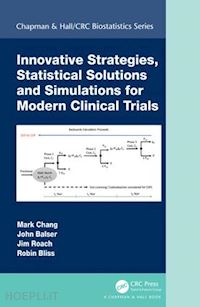Dr. Mark Chang is Sr. Vice President, Strategic Statistical Consulting at Veristat. Before joining Veristat, Chang served various strategic roles in AMAG and Millennium Pharmaceuticals, including Vice President of Biometrics at AMAG and director and scientific fellow at Millennium/Takeda. Chang is a fellow of the American Statistical Association and an adjunct professor of Biostatistics at Boston University. He is a co-founder of the International Society for Biopharmaceutical Statistics, co-chair of the Biotechnology Industry Organization (BIO) Adaptive Design Working Group, and a member of the Multiregional Clinical Trial (MRCT) Expert Group. Hehas published 11 books, including Monte Carlo Simulation for the Pharmaceutical Industry, Adaptive Design Theory and Implementation Using SAS and R, Modern Issues and Methods in Biostatistics, Paradoxes in Scientific Inference, and Principles of Scientific Methods. John Balser, PhD, co-founder and President of Veristat, has developed the company as industry leaders in areas of clinical monitoring, data management, biostatistics and programming, medical writing, and project management. John is actively involved with clinical projects in his role as one of Veristat’s principal statistical consultants. In this role, he assists clients with clinical study design and program development based on his many years of experience in the statistical aspects of clinical research. He is often called upon to assist clients on a variety of statistical issues at meetings with regulatory agencies. Prior to founding Veristat in 1994, John served as Vice President, Biostatistics, and Data Management at Medical & Technical Research Associates, Inc. He has held positions of increasing responsibility in the biostatistics departments at various pharmaceutical companies including E.R. Squibb, Biogen, and Miles. John received his MS and PhD in Biometrics from Cornell University, and has been actively engaged in clinical biostatistics for over 25 years. John is an avid runner and has competed in the Boston Marathon. Robin Bliss, PhD joined Veristat in October, 2011 and has served as Director, Biostatistics since October, 2017. Through her experience at Veristat, Dr. Bliss has implemented complex adaptive designs across clinical trials in Phases I, II, and III as well as seamless Phase I/II and II/III trials. She has also provided strategic advice to sponsor companies, including representation of such companies at regulatory agencies, participation with scientific advisory committees, performance of simulation studies, and other consulting services. Dr. Bliss has taught conference short courses in adaptive design as well as statistical courses as a university adjunct faculty member. Prior to Veristat, Dr. Bliss held a post-doctoral fellowship position at Brigham and Women’s Hospital (Boston) in the Orthopedic and Arthritics Center for Outcomes Research. Dr. Bliss earned her PhD in Biostatistics from Boston University where her research focused on spatial and environmental statistics. James M. Roach, MD, FACP, FCCP joined Pulmatrix as their Chief Medical Officer (CMO) in November 2017. Dr. Roach served as the CMO at Veristat, Inc for the year prior to joining Pulmatrix, and prior to Veristat served as the Senior Vice President, Development and CMO at Momenta Pharmaceuticals, Inc. from 2008-2016. From 2002-2008 Dr. Roach was the Senior Vice President, Medical Affairs at Sepracor, Inc. Dr. Roach has also held senior clinical research and/or medical affairs positions at Millennium Pharmaceuticals, Inc., LeukoSite, Inc., Medical and Technical Research Associates, Inc. and Astra USA. Dr. Roach held an academic appointment at Harvard Medical School for close to 25 years and has been an Associate Physician at Brigham and Women’s Hospital (BWH) and member of the BWH Pulmonary and Critical Care Medicine Division since 1993. He received his B.A. in Biology and Philosophy from the College of the Holy Cross and his M.D. from Georgetown University School of Medicine. Dr. Roach completed his residency in Internal Medicine and fellowships in Pulmonary Disease and Critical Care Medicine at Walter Reed Army Medical Center in Washington, D.C., and served in the US Army Medical Corps for ten years. Dr. Roach is board certified in Internal Medicine and Pulmonary Disease, and is a Fellow of the American College of Physicians (ACP) and the American College of Chest Physicians (ACCP).











